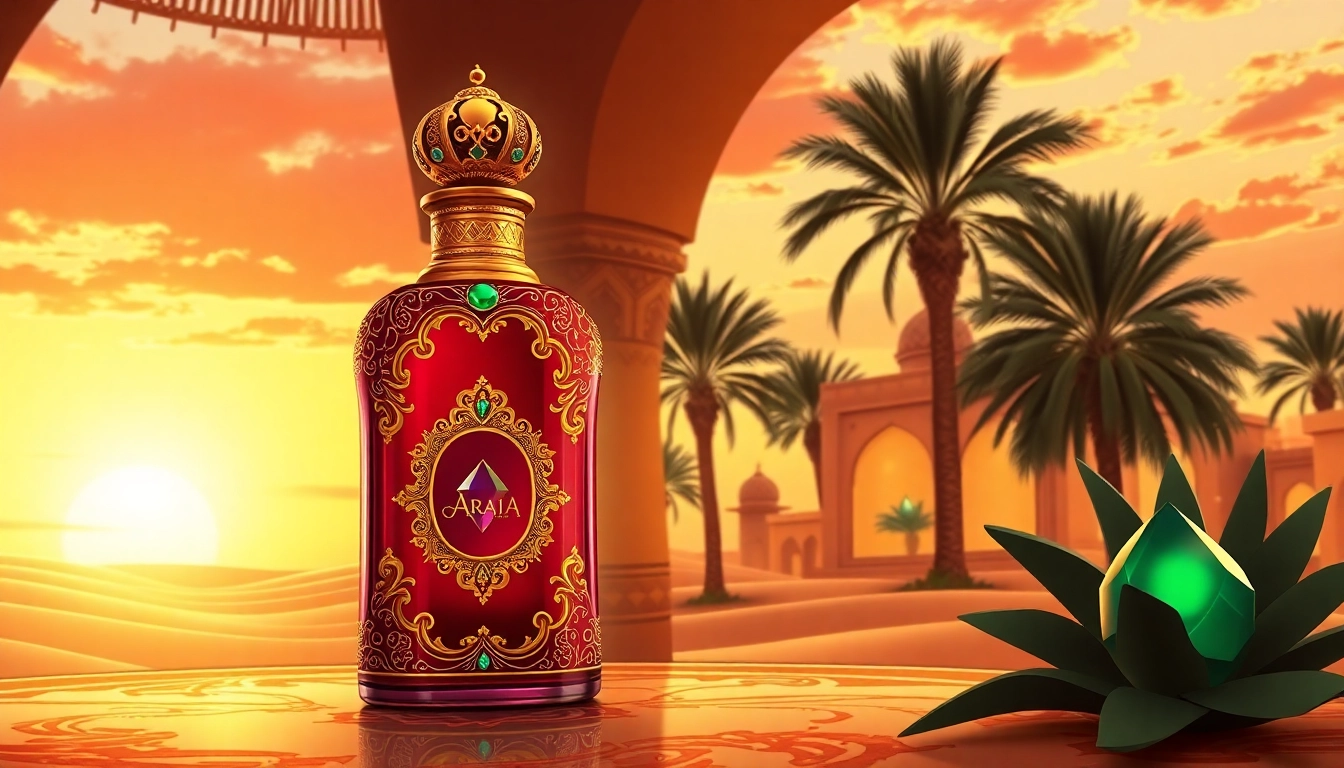A Brief History of Arabian Perfume
Perfume has long been an integral part of Arabian culture, steeped in rich traditions that date back millennia. From its roots in ancient civilizations to its contemporary manifestations, arabian perfume is a testament to artistry and sophistication in the world of fragrances. Let’s explore how this aromatic heritage has evolved over the years.
The Roots of Fragrance in Arabian Culture
The history of Arabian perfumes is closely linked to the region’s geographical characteristics and cultural practices. The Arabian Peninsula was a vital hub for trade routes that connected Asia, the Middle East, and Europe. As a result, merchants exchanged not only goods but also ideas and traditions related to scent. The ancient societies of Mesopotamia, Egypt, and the Indus Valley utilized various essential oils and fragrant materials, such as myrrh, frankincense, and various spices, in their rituals and daily lives.
Key Ingredients Used in Arabian Perfumes
Arabian perfumes are renowned for their complex and captivating aromas, often derived from natural ingredients. Key elements include:
- Oud: Known as the “wood of the gods,” oud is a sophisticated and highly sought-after ingredient derived from the resin of Aquilaria trees. Its rich, deep, and woody scent forms the backbone of many Middle Eastern fragrances.
- Amber: A warm and resinous ingredient, amber adds depth and a rich sweetness to perfumes, evoking a sense of nostalgia and comfort.
- Musk: Traditionally sourced from animal glands, musk is now primarily synthetic. It provides a sensual and lingering quality to fragrances.
- Floral Notes: Ingredients like rose and jasmine are often incorporated to create balance and freshness within the heavier notes.
Major Brands Leading the Arabian Perfume Industry
The Arabian perfume market has seen the rise of legendary brands that embody the essence of these rich fragrances. Some notable names include:
- Lattafa Perfumes: This brand is known for its wide range of sets and bestsellers that showcase both tradition and modernity.
- Swiss Arabian: A pioneer in blending Western influences with traditional Arabian scents, Swiss Arabian has established itself as a leader with innovative fragrances.
- Al Haramain: Renowned for creating some of the finest quality perfumes, Al Haramain mixes classical and contemporary aromas that cater to diverse preferences.
Understanding the Different Types of Arabian Perfumes
With the diversity of fragrances available, understanding the types of Arabian perfumes can enhance your experience. Here’s a breakdown.
Eau de Parfum vs. Pure Oil: What’s the Difference?
Arabian perfumes primarily come in two forms: Eau de Parfum and pure oil. Eau de Parfum typically has a higher concentration of fragrance oils, often ranging from 15% to 20%, making it more long-lasting and powerful. On the other hand, pure oil consists of undiluted fragrance and offers a more intimate and concentrated scent experience. Many enthusiasts prefer pure oils for their depth and unique character.
Popular Fragrance Families in Arabian Perfumes
While Arabian perfumes encompass a variety of fragrance families, some of the most cherished include:
- Oriental: Rich and warm, often featuring notes like amber, musk, and oud.
- Floral: Fresh and romantic, characterized by notes of jasmine, rose, and other florals.
- Woody: Earthy and grounding, featuring luxe woods and resins.
- Spicy: Bold and intriguing, typically blended with spices like cardamom, cinnamon, and saffron.
Seasonal Fragrances: When to Wear What
Choosing the right perfume can also depend on the season. For instance, lighter floral fragrances may be more suitable for warm months while deeper, richer scents thrive in colder seasons. Understanding your personal scent preferences in alignment with seasonal changes can enhance your olfactory experience.
Choosing the Right Arabian Perfume for You
Selecting a signature perfume is often a daunting task. Here are some helpful guidelines to find the perfect arabian fragrance that resonates with your personality.
Identifying Your Scent Profile
Begin by exploring your personal preferences. Are you drawn to sweet, floral, or earthy notes? Identifying these preferences can simplify the decision-making process.
Testing and Layering Fragrances
Sampling various fragrances is crucial. When exploring scents, apply a small amount on your wrist or the back of your hand. Allow it to dry and develop on your skin, as fragrances evolve over time.
Common Mistakes to Avoid When Selecting a Perfume
As you navigate the world of perfumes, be mindful of some common pitfalls, such as:
- Blind buying without testing can lead to regret.
- Choosing a scent solely based on popularity can overlook personal tastes.
- Forgetting to consider how fragrances interact with your body chemistry can lead to unexpected results.
Where to Buy Authentic Arabian Perfumes
Finding authentic Arabian perfumes requires diligence and knowledge. Here are some tips to guide your purchase.
Online Retailers vs. Local Boutiques
While online options provide a broader selection, local boutiques often offer personalized recommendations and the opportunity to test scents firsthand. Explore both avenues to find the right fit.
Identifying Genuine Products and Avoiding Counterfeits
Counterfeit fragrances are prevalent, particularly in popular markets. Look for reputable retailers and brands with authentic certification to ensure your purchase is legitimate.
Understanding Perfume Pricing: What to Expect
While prices can vary significantly based on brand and type, understanding general pricing patterns can help you gauge value. Luxury brands typically fetch premium prices due to the quality of their ingredients and craftsmanship.
The Ritual of Wearing Arabian Perfume
Applying fragrance is not just about scent; it’s a ritual that can elevate your mood and reflect your personality. Here’s how to create a meaningful practice.
Application Tips for Long-Lasting Scent
To maximize the longevity of your fragrance, consider the following:
- Apply the perfume on pulse points where the body emits more heat, such as pulse points on the wrists, neck, and behind the ears.
- Consider layering with complementary scented lotions or oils to enhance the overall scent profile.
- Don’t rub the fragrance; instead, allow it to air-dry for optimal diffusion.
Storing Your Perfume for Longevity
Proper storage is key to preserving the integrity of your perfume. Store fragrances in cool, dark places away from direct sunlight and temperature fluctuations to maintain their aromatic quality.
Creating Your Signature Scent Routine
Establishing a scent routine can enhance your daily rituals and help you feel connected to your perfume. Take time to find fragrances that match your mood, outfit, or occasion, creating a versatile yet personal collection.









